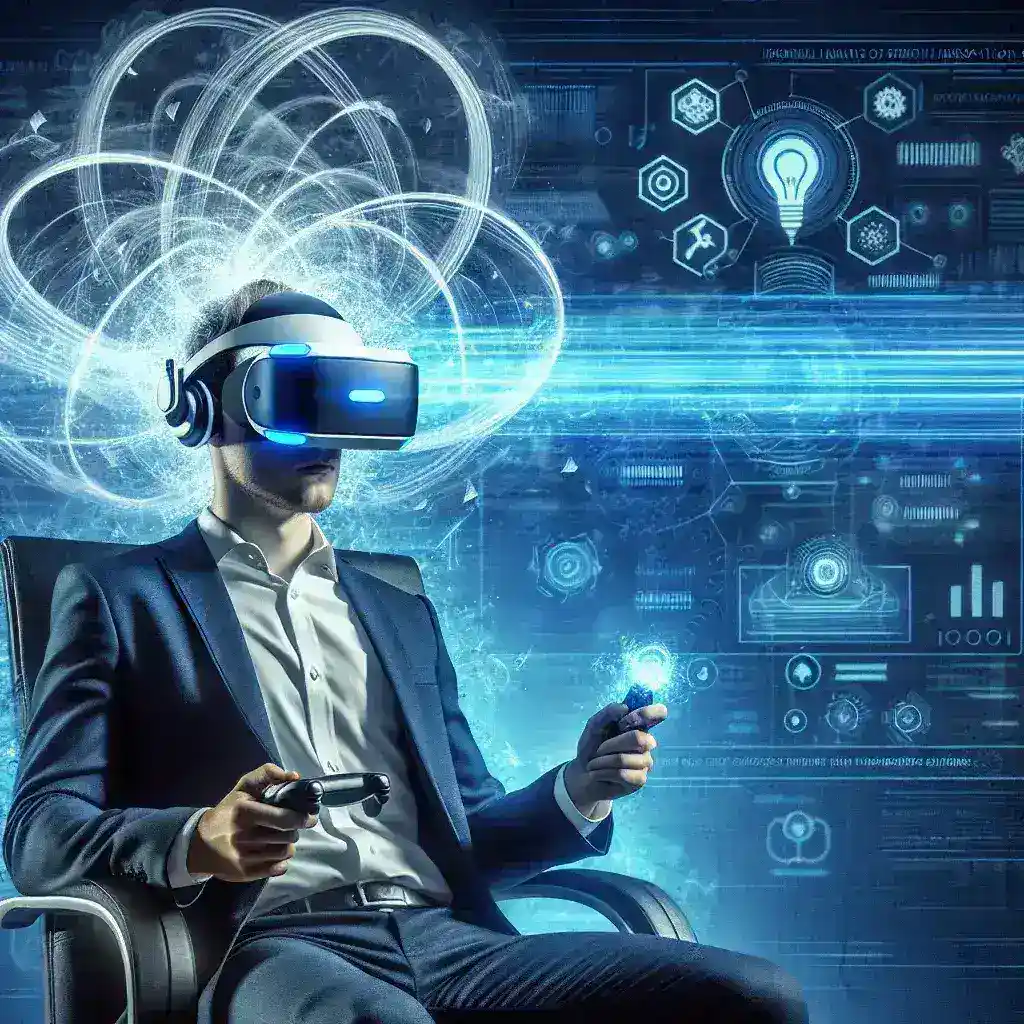Understanding VR Motion Sickness
Virtual reality (VR) has taken the world by storm, offering immersive experiences that range from gaming to training simulations. However, one significant hurdle for many users is VR motion sickness, a condition that can lead to discomfort or nausea due to discrepancies between visual motion and physical sensations. Understanding the causes and solutions to this problem is crucial for developers and users alike.
What Causes VR Motion Sickness?
VR motion sickness, often referred to as simulator sickness, occurs when there is a conflict between the visual input received by the eyes and the vestibular system’s perception of movement. In simpler terms, while your eyes might be perceiving rapid movements in a virtual environment, your body may not physically be moving, leading to a sensory mismatch. This phenomenon can be exacerbated by factors such as:
- Field of View (FOV): A wide FOV can amplify the feeling of immersion but may also increase the chances of motion sickness.
- Frame Rate: Low or inconsistent frame rates can cause lag, resulting in disconnects between what the user sees and how their body feels.
- Latency: High latency in VR systems can lead to delayed feedback, which can further confuse the user’s senses.
- Type of Movement: Fast-paced movements or excessive rotations can trigger nausea more than slower, more controlled motions.
Technological Solutions to Combat Motion Sickness
As the demand for immersive VR experiences grows, so does the need for effective solutions to counteract motion sickness. Below are several technologies and strategies that have been developed to mitigate this issue:
1. Enhanced Frame Rates and Refresh Rates
One of the most critical factors in VR comfort is the frame rate. Higher frame rates (ideally 90 frames per second or higher) paired with high refresh rates can create smoother transitions and reduce the likelihood of motion sickness. Developers are continually working on optimizing software to improve these metrics.
2. Motion Sickness Reduction Algorithms
Various algorithms have been developed to minimize motion sickness. These include:
- Field of View Adjustment: Dynamically adjusting the FOV based on user movement can help reduce discomfort.
- Frame Rate Stabilization: Using predictive algorithms to stabilize frame rates helps maintain a consistent visual experience.
3. Head Tracking Improvements
Accurate head tracking technology is crucial for VR. Innovations in tracking systems, such as inside-out tracking, allow the headset to detect its position relative to the user’s surroundings, minimizing latency and lag. This technology helps create a more seamless experience that is less likely to induce motion sickness.
4. Visual Comfort Features
VR developers are integrating features like:
- Darkening the Edges: Darkening the peripheral vision can help users focus on the central experience and reduce feelings of nausea.
- Comfort Mode: Many games have a ‘comfort mode’ that limits rapid movements and provides a more controlled environment.
5. Virtual Reality Training and Gradual Exposure
Gradual exposure to VR environments can allow users to acclimate to the sensations involved. Training programs that focus on paced exposure to VR scenarios can help users build tolerance, significantly reducing motion sickness over time.
Non-Technological Solutions and Personal Strategies
While technology plays a vital role in alleviating VR motion sickness, several personal strategies can also be effective:
1. Taking Breaks
Encouraging users to take regular breaks can help prevent discomfort. Short sessions with intervals can allow the body to adjust and recover.
2. Staying Hydrated
Staying properly hydrated can influence overall well-being and may reduce the severity of motion sickness symptoms.
3. Using Ginger or Peppermint
Natural remedies, such as ginger or peppermint, have been known to alleviate nausea in some users and may be beneficial during VR sessions.
4. Calming Techniques
Practicing breathing exercises or using mindfulness techniques can help users manage anxiety and discomfort related to VR motion sickness.
The Future of VR Motion Sickness Solutions
As VR technology continues to evolve, so too will the solutions for motion sickness. Future predictions suggest that advancements in:
- AI and Machine Learning: Utilizing AI to predict and respond to user comfort levels in real-time may provide more personalized experiences.
- Neural Interfaces: Emerging technologies that connect directly with the user’s nervous system could potentially eliminate the sensory mismatch altogether.
Conclusion
VR motion sickness presents a significant challenge, but with ongoing advancements in technology and user-focused strategies, effective solutions are emerging. From enhanced tracking systems to personal coping techniques, the landscape of VR comfort is evolving. As users and developers work together to address this issue, the future of virtual reality holds promise for a more comfortable and immersive experience.

